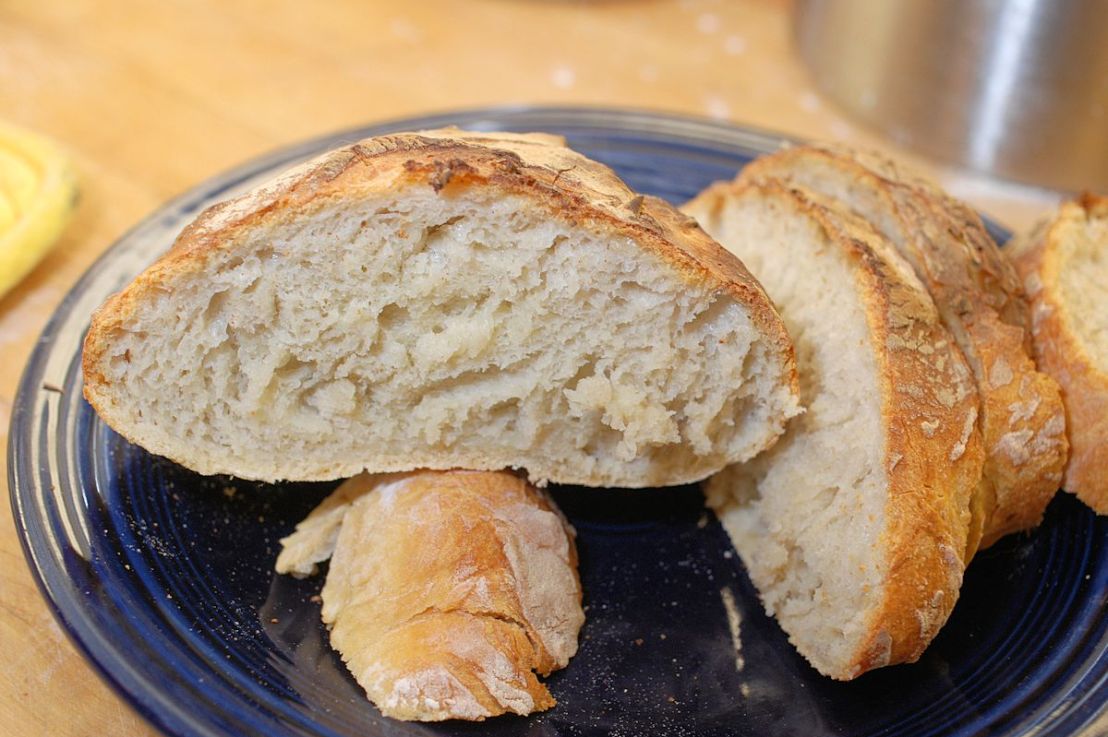We’ve been making pizza every week for years now, and here we share some of the tricks that evolved, when we don’t have time we just order pizza online or get some frozen pizza from our freezer. We make our dough from scratch and buy sliced, fresh mozzarella from the local deli counter. Toppings are whatever you like. We usually make one veggie and one pepperoni.
The dough
- 3 cups flour
- 1-1/2 cups lukewarm water
- 2 ½ tsp dry yeast
- Flour for kneading
- Cornmeal to slide onto peel
- 2 baking stones
The sauce
- 1 6-oz can tomato paste
- 6 oz water
- ½ cup homemade tomato sauce
- 2 tsp basil
- 2 tsp oregano
- 1 large sprig rosemary
- 2 tsp sugar
- 2 cloves garlic
The toppings
- 8 oz mushrooms, sliced
- 1 sweet red pepper
- 1 onion, sliced
- 1 stick pepperoni, sliced
- 1 lb fresh mozzarella, sliced
- Place the baking stones in the oven and preheat to 465 ° F. If you don’t’ have baking stones, use any good pizza pan. The stones will help make a somewhat better crust but they aren’t absolutely required.



- To make the dough, add the yeast and sugar to a pitcher large enough to hold 1-½ cups water. Add the lukewarm water and stir until uniform. Let the yeast mixture rise for about 5 minutes until it bubbles. This is called “proving” the yeast, and if it doesn’t foam up, try another packet of yeast. We have started using yeast from a jar, and keeping the rest refrigerated so it doesn’t deteriorate. Yeast packets can be a crap shoot: their health depends on how they are stored at the grocer.
- Add the 3 cups of flour to a food processor, fitted with a dough blade, and pour in the yeast mixture. Pulse until smooth. If the dough looks too sticky, add more flour a half-scoop at a time and mix in. Allow the dough to rise for 60-90 minutes until it is more than doubled in bulk.



- To make the sauce, mix the tomato paste, water and some bottled tomato sauce in a blender or bowl. We use our homemade garden tomato sauce, but if you don’t have that, leave it our or add a little bottled sauce. Add the sugar, basil and oregano. Strip the leaves off the rosemary between your thumb and forefinger and add them to the sauce. Add the sugar, or the sauce will be a bit sour. Crush the 2 garlic cloves in the garlic press and add them to the sauce. Mix thoroughly in the blender.


- When the dough has risen, scrape it out onto a floured board, and if it is too sticky roll the dough in the flour to mix a little in. Divide the dough in half and roll out each into s pizza-sized circle on the floured board.

- Before adding the toppings, sprinkle some cornmeal under the dough so you can slide it around and lift it with a pizza peel.
- Pour half the sauce on each pizza, and cover with mozzarella slices.



- Add whatever toppings your like. We usually make veggie, pepperoni and if needed, sausage and onion.

- Slip the peel under the finished pizza, open the oven, and slide the pizza onto the baking stone. Repeat for the second pizza. Bake each pizza for 16 minutes: the second one may take an extra minute.
- Remove them from the oven with the peel, and cut them into slices to serve.

This whole process takes under 2 hours, including the rising and baking time, and is more than worth it. Start the dough and heat the oven as soon as you get home, and everything else will fall into place.



 For this quantity of flour, you really need to weigh it out on a kitchen scale, because the volume varies a lot with how you scoop out the flour. KA says it is 6 ½ to 7 ½ cups of flour. May be, but weighing it is so much easier. Then you just dump it into a mixer bowl with the other ingredients and stir it up. KA says the flour-liquid ratio is important for this to work. You should end up with a thick, sticky batter, not a dough.
For this quantity of flour, you really need to weigh it out on a kitchen scale, because the volume varies a lot with how you scoop out the flour. KA says it is 6 ½ to 7 ½ cups of flour. May be, but weighing it is so much easier. Then you just dump it into a mixer bowl with the other ingredients and stir it up. KA says the flour-liquid ratio is important for this to work. You should end up with a thick, sticky batter, not a dough.

 To make a loaf, sprinkle the dough with flour so you can pick it up and weigh out 18-19 oz of dough for a loaf. KA suggests as little as 14 oz, but that really makes a small loaf.
To make a loaf, sprinkle the dough with flour so you can pick it up and weigh out 18-19 oz of dough for a loaf. KA suggests as little as 14 oz, but that really makes a small loaf.







 You control the oil reservoir with a 3-position lever with the settings Remove, Fry and Drain. To cook, you set it to the Fry position, and to drain the oil out you set it to drain when you are done cooking. When the oil is sufficiently cool, it drains through a filter into the oil reservoir.
You control the oil reservoir with a 3-position lever with the settings Remove, Fry and Drain. To cook, you set it to the Fry position, and to drain the oil out you set it to drain when you are done cooking. When the oil is sufficiently cool, it drains through a filter into the oil reservoir. The fryer holds a little over 14 cups of oil and has a convenient fryer basket to lower and raise your foods, and has a thermostat that can be set between about 300° and 375° F. We found that it took only about 10 minutes to get to 320° and maybe another 5 minutes to get to 375°.
The fryer holds a little over 14 cups of oil and has a convenient fryer basket to lower and raise your foods, and has a thermostat that can be set between about 300° and 375° F. We found that it took only about 10 minutes to get to 320° and maybe another 5 minutes to get to 375°. To use the fryer, you pour oil into the fryer so it comes up between the Min (12 cups) and Max (14 cups) markings and then plug in the heating element and start the oil heating. When it comes to temperature the light goes out and you can lower your foods into the oil.
To use the fryer, you pour oil into the fryer so it comes up between the Min (12 cups) and Max (14 cups) markings and then plug in the heating element and start the oil heating. When it comes to temperature the light goes out and you can lower your foods into the oil. For our first try we made fish and chips using cod and russet potatoes. We probably cooking them longer than needed, but this is part of the learning curve with a new appliance. We also tried double frying the French fries, cooking them at 320, and then after the fish was done, recooking them at 375. This worked well, but again we probably overdid the 320 frying time and will back off from 12 minutes to less than 10 minutes.
For our first try we made fish and chips using cod and russet potatoes. We probably cooking them longer than needed, but this is part of the learning curve with a new appliance. We also tried double frying the French fries, cooking them at 320, and then after the fish was done, recooking them at 375. This worked well, but again we probably overdid the 320 frying time and will back off from 12 minutes to less than 10 minutes. When you are done frying, you just turn the power off and set the oil reservoir switch to Cool and Drain. This takes an hour or two to cool down and drain.
When you are done frying, you just turn the power off and set the oil reservoir switch to Cool and Drain. This takes an hour or two to cool down and drain. They recommend that you carry the fryer to its storage space without the oil reservoir and then bring the reservoir to it separately to avoid spillage. It is not, however, difficult to carry.
They recommend that you carry the fryer to its storage space without the oil reservoir and then bring the reservoir to it separately to avoid spillage. It is not, however, difficult to carry. You may well have seen internet ads for the
You may well have seen internet ads for the 
 And how did it do? It was at best adequate. There was a significant amount of drag, leaving you feeling like you might cut yourself at any minute, and this was just the first use of the blade. We would expect this drag would get worse as it dulls during the week. It is about the quality of the throw away
And how did it do? It was at best adequate. There was a significant amount of drag, leaving you feeling like you might cut yourself at any minute, and this was just the first use of the blade. We would expect this drag would get worse as it dulls during the week. It is about the quality of the throw away 

